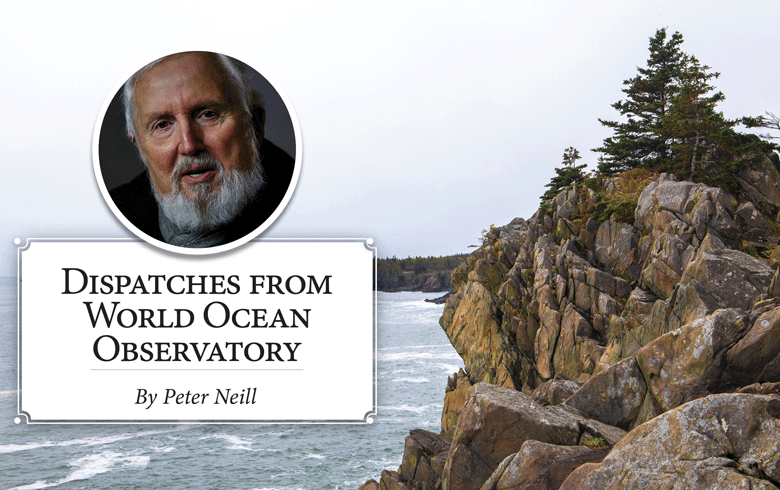Observing the ocean is to look for systems, myriad details in flux, each and every one, be it animal, vegetable, or data number, a microscopic part of a complex unit, each unit again a part of a system more complex.
The ocean in a storm appears chaotic, in the air above and on the surface sea, and below, where forces fight and unite, itself part of a larger and more complicated system that in the specific and the general is elemental and universal.
It may be that we can never capture by poetry or science … this ocean of life…
Chaos as a subject of study as a mathematical, philosophical, or natural phenomenon informs our understanding of how the world works. Ironically, what seems disconnected and contradictory is actually integrated and harmonious within our physical world, our studies of meaning, and our perceptions of the social and political mechanics of our existence.
The best visualizations of this complexity are the bifurcating diagrams of continental watersheds in North America, Europe, and the Indus Valley. They resemble with uncanny similarity the maps of the capillaries, veins, arteries, interconnected organs, muscles, sinews, synapses, heart, and brain of the human body, a vast complexity that exists as one system, one human, that singular being individual, but a part of a friendship, a team, a marriage, a family, a community, a nation, a global inclusivity that is the macrocosm in which we live, in a flow, one moment at a time.
Wallace Stevens, in his poem, “The Solitude of Cataracts,” describes it this way:
The flecked river,
Which kept flowing and never the same way twice, flowing
Through many places, as if it stood still in one
That, in the shadowless atmosphere,
The knowledge of things lay round but unperceived.
It may be that we can never capture by poetry or science the true dimension of this condition, this ocean of life, however placid or chaotic it appears to be. But it seems a fundamental need for us to try.
When I look at Stevens’ river, descending its complex paths to the coast and open sea, I see pathways through chaos, an itinerary of experience and speculation, risky, uncertain, a pursuit of answers to problems that confront me every step of the way.
An astronomer confronts a black hole. An oceanographer confronts a blue hole of unexpected depth. A politician looks at a system of injustice, racial bias, and conflicting interests and strives for an effective equitable policy to address complexity, chaos, in the streets.
Each one of them, and each one of us is searching for “the knowledge of things…(laid) round but unperceived.”
A virus springs from nowhere and infects millions. A toxin triggers an algae bloom and millions also die. Emissions from the stacks of energy and consumption poison millions of insects, birds, plants, trees, small amphibians, oceanic creatures, our water, our children through invisible acidification in that “shadowless atmosphere” where eventually there is no oxygen, no oscillating light, no life.
Problems abound, challenges recur, the world cries out for order as the solution for disorder, a suspended moment in time when things seemed clear, but weren’t, an answer to so many questions that frustratingly change in size and color and consequence every day. What to do?
We need to simplify our strategy for living. We need to address, each of us, one problem at a time. There are certainly plenty to go round. Again, the ocean provides one place to engage.
Fresh approaches, new technologies, novel ideas, and viable alternatives will be explored in an oceanic flow, to introduce examples of ingenuity and invention into the conversation, into the stream, as one voice amplifying other voices joined in a chorus of possibility and systematic engagement with the ocean, not as chaos, but as a complex system of simple behaviors, as a simple system of complex behaviors
“Many places,” Stevens writes, “as if … stood still in one.”
Peter Neill is director of the World Ocean Observatory, which produces weekly radio essays heard on WERU-FM, 89.9, on podcast at apple.com/us/podcast/world-ocean-radio/id425361249, and at http://www.worldoceanobservatory.org/world-ocean-radio. He lives in Sedgwick.





